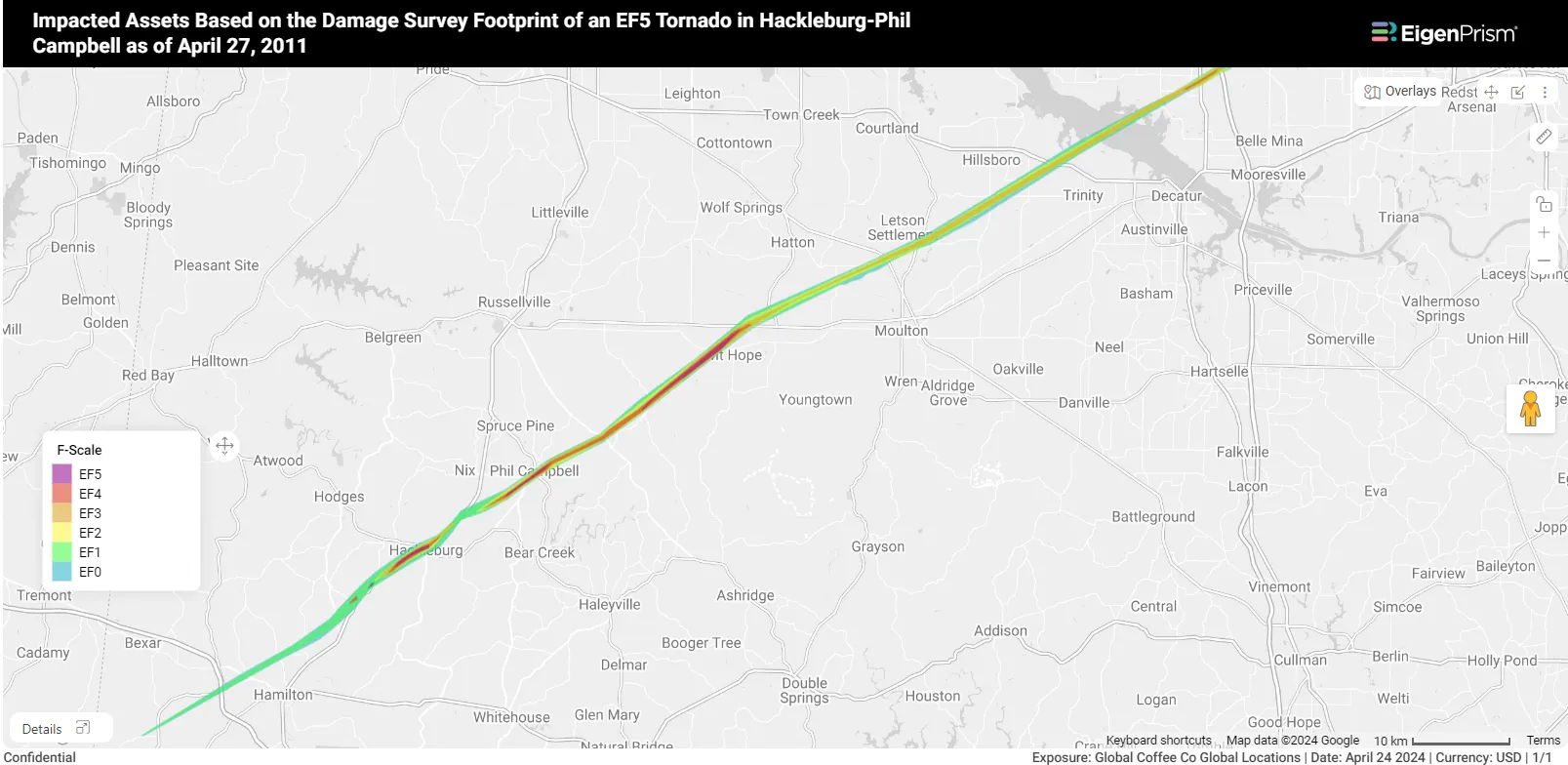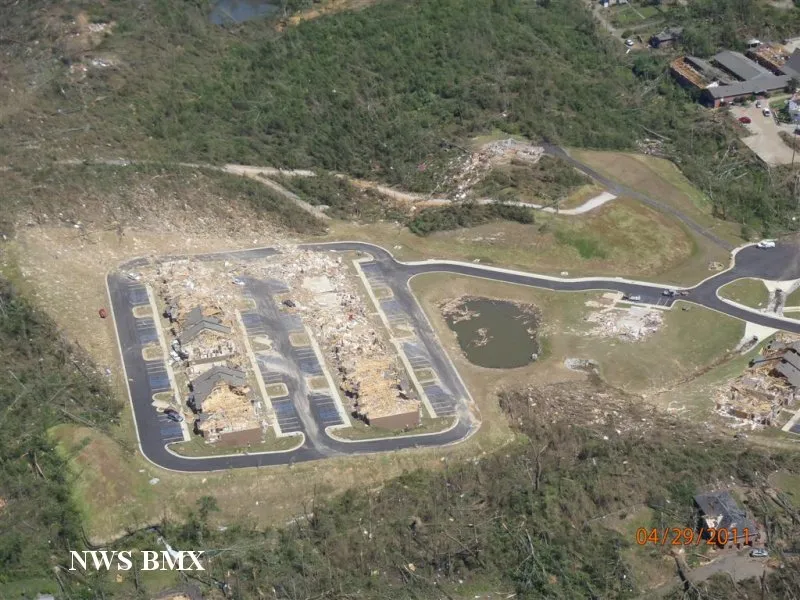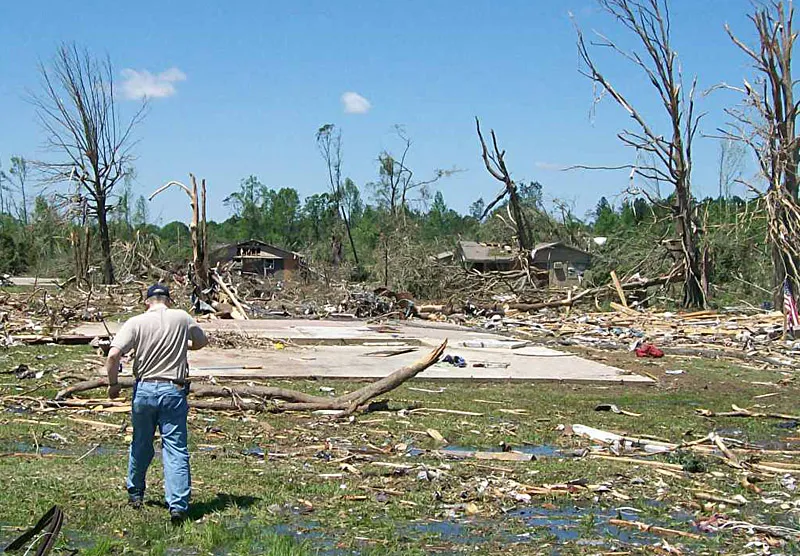2011 Super Outbreak: Alabama’s Historic Tornado Outbreak
More than a decade later, the 2011 Super Outbreak continues to be one of the most intense tornado events in U.S. history. Over 360 tornadoes tore through the Southern, Midwestern, and Eastern United States from April 25 to April 28, 2011. The outbreak resulted in more than 320 fatalities and inflicted damages worth billions of dollars.
The 2011 Super Outbreak has become the second deadliest tornado outbreak in recorded US history. With damages estimated at $12 billion, this event is one of the costliest tornado disasters, highlighting the devastating potential of severe weather events.
April 27, 2011: A Day like no other
Of the four days, the most catastrophic day was April 27, when 216 tornadoes were recorded, including four rated EF5, indicating wind speeds exceeding 200 mph. Alabama was the hardest-hit state, experiencing 69 tornadoes.
Also, two tornadoes from this day are in the top 10 costliest US tornadoes (1950 – 2022) list:
Hackleburg–Phil Campbell EF5 Tornado

The Hackleburg–Phil Campbell tornado was the deadliest of the 2011 outbreak, initially touching down in Marion County, Alabama. Rated initially as an EF3, its designation was later elevated to EF5, marking it the first tornado of this magnitude in Alabama since 1998. The tornado ravaged Hamilton and Hackleburg, destroying many homes, businesses, and a major Wrangler, Inc. factory.
EigenPrism users can analyze this event in the platform by using this link. This is also a part of the report template mentioned towards the end of the article
Tuscaloosa–Birmingham, Alabama

A formidable multiple-vortex wedge tornado emerged in rural Greene County, Alabama, and proceeded across Tuscaloosa County, impacting the southern and eastern areas of Tuscaloosa. Debris from this tornado was observed falling from the sky over Birmingham, more than 20 miles away. In Tuscaloosa alone, clearing debris amounted to $100 million.

The National Weather Service recorded the tornado’s path at 80.7 miles with a peak width of 1.5 miles. The most severe damage suggested peak winds of approximately 190 mph, leading to its classification as an EF4. The tornado was particularly deadly, claiming 44 lives in Tuscaloosa and 20 in Birmingham, with a total of 64 fatalities and over 1500 injuries attributed to its devastation.
EigenPrism users can analyze this event in the platform by using this link. This is also a part of the report template mentioned towards the end of the article.
Impact on Other States

NWS’s Response on 2011 Super Outbreak
The National Weather Service (NWS) saw this event as an eye-opener. Due to the severe impact and high death toll, NWS said it needs to improve its technology and services to provide more accurate and timely tornado warnings. This tragedy remains a somber reminder of the destructive power of severe weather and underscores the importance of advanced warning systems and preparedness.
Actionable Analytics on EigenPrism
EigenPrism users can run a what-if scenario on their exposure datasets by using this report template:
This report template consists of damage survey footprints of 41 tornadoes, from April 27, 2011, grouped together. It includes the following noteworthy tornadoes:
- EF5 Tornado Track in Hackleburg-Phil Campbell
- EF4 Tornado Track in Tuscaloosa-Birmingham
- EF3 Tornado Track in Hubbertville
- EF3 Tornado Track in Parrish-Cordova
Of course, the same scenario is unlikely to happen exactly, so here is a report template that will overlay a historical hazard map based on the annual occurrence frequency of tornadoes.
This report provides the annual occurrence frequency of tornadoes of strength EFO and higher, approximately 25 miles of historical tornado track. The three pages in the report showcase the frequencies based on an analysis of historical data sourced from NOAAs Storm Prediction Center (SPC) for three time periods: 5 years, 10 years, and 73 years, each ending in 2022.
Don’t have access to EigenPrism®?
Contact us if you don’t have access to EigenPrism and want to learn more.





